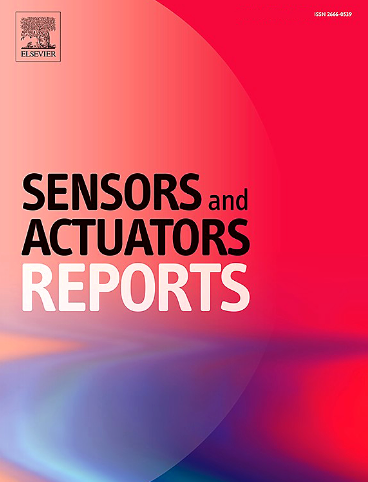Emerging EM wave sensors for non-invasive glucose monitoring: Review, techniques and developments
IF 7.6
Q1 BIOTECHNOLOGY & APPLIED MICROBIOLOGY
引用次数: 0
Abstract
As a chronic disease, diabetes has impacted millions of individuals across the globe and is spreading at a very fast rate among adults mainly. Continuous observations of essential indicators like pulse rate, arterial pressure, and blood sugar levels, and oxygen saturation are crucial to maintain a healthy life and preventing severe complications associated with these. Using non-invasive method of blood glucose monitoring has paved its way to be one of the most prominent safest technique without harming the skin of the patients. This examination delves into the application of planar resonant sensors utilizing microwaves for quantifying glucose concentrations. The sensors based on RF EM waves mainly operating in the region from few MHz to GHz frequencies have garnered notable attention in the scientific community in recent years due to their significant contributions. They can detect alterations in dielectric properties caused by fluctuations in glucose concentrations. These sensors exhibit electrical reactions that rely on the dielectric properties of their surroundings. This review offers a current assessment of this sensing methodology, categorized by sensing parameters, and suggests typical non-invasive microwave sensor varieties for assessment. It further examines the key aspects of different sensor types, outlines potential future avenues, and addresses challenges in the field of glucose monitoring.

用于无创血糖监测的新兴电磁波传感器:综述、技术与发展
作为一种慢性疾病,糖尿病已经影响了全球数百万人,并以成年人为主,以非常快的速度蔓延。持续观察脉搏率、动脉压、血糖水平和血氧饱和度等基本指标对于维持健康生活和预防与这些指标相关的严重并发症至关重要。无创血糖监测技术已成为目前最突出的、最安全的、不伤害患者皮肤的血糖监测技术之一。本研究深入探讨了平面共振传感器利用微波定量葡萄糖浓度的应用。基于射频电磁波的传感器主要工作在几兆赫至千兆赫频段,近年来由于其重大贡献而引起了科学界的广泛关注。它们可以检测到葡萄糖浓度波动引起的介电特性的变化。这些传感器表现出依赖于周围介质特性的电反应。这篇综述提供了这种传感方法的当前评估,按传感参数分类,并提出了典型的非侵入性微波传感器品种进行评估。它进一步研究了不同类型传感器的关键方面,概述了潜在的未来途径,并解决了葡萄糖监测领域的挑战。
本文章由计算机程序翻译,如有差异,请以英文原文为准。
求助全文
约1分钟内获得全文
求助全文
来源期刊

Sensors and Actuators Reports
Multiple-
CiteScore
9.60
自引率
0.00%
发文量
60
审稿时长
49 days
期刊介绍:
Sensors and Actuators Reports is a peer-reviewed open access journal launched out from the Sensors and Actuators journal family. Sensors and Actuators Reports is dedicated to publishing new and original works in the field of all type of sensors and actuators, including bio-, chemical-, physical-, and nano- sensors and actuators, which demonstrates significant progress beyond the current state of the art. The journal regularly publishes original research papers, reviews, and short communications.
For research papers and short communications, the journal aims to publish the new and original work supported by experimental results and as such purely theoretical works are not accepted.
 求助内容:
求助内容: 应助结果提醒方式:
应助结果提醒方式:


